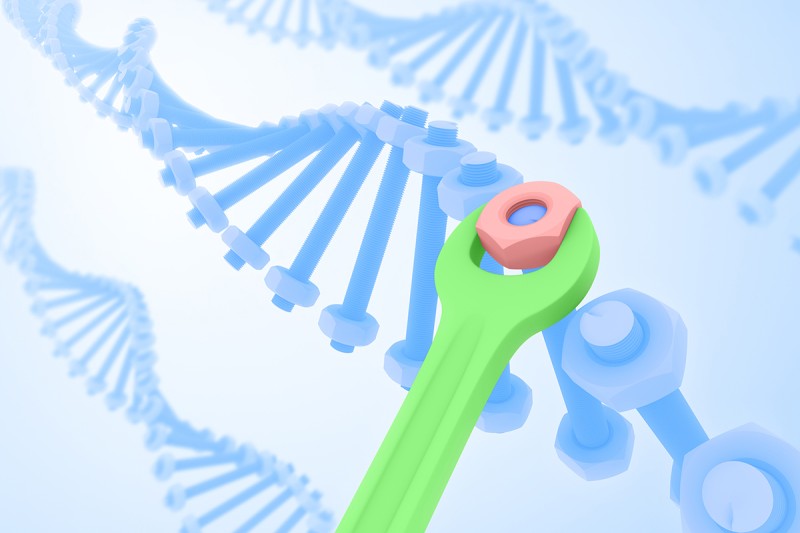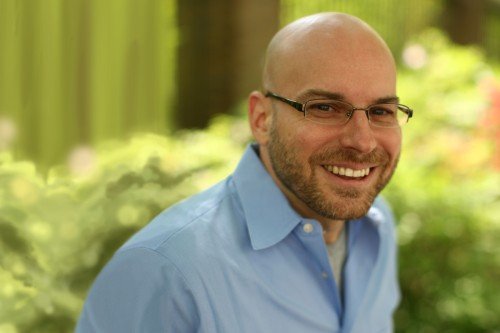
Cells must repair damaged DNA to function normally and prevent mutations that can lead to cancer.
When cells make copies of themselves, their DNA is sometimes damaged. This can cause genetic mutations that accumulate and lead to diseases such as cancer. Repairing these DNA breaks is essential for any organism, including humans, to function normally.
An especially severe type of DNA damage is called a double-strand break, in which the two strands of the DNA double helix break in the same place. Memorial Sloan Kettering molecular biologist Scott Keeney is investigating how cells identify and fix these breaks through a process called homologous recombination, which ensures the DNA segment is restored to its previous state.
On January 6 in the journal Science, Dr. Keeney and two members of his laboratory report exciting findings that shed light on an essential early step in this repair process. We spoke with him to learn more.
How does a cell go about repairing something as delicate as DNA strands?
Cells have several methods for double-strand break repair, but homologous recombination is one that is particularly faithful at repairing breaks accurately. One of the best ways to understand recombination is by studying it in meiosis, the process by which cells divide to create reproductive cells such as eggs and sperm. Double-strand DNA breaks occur at a very high frequency in meiosis.
It’s been known for decades that before double-strand breaks can be repaired, the ends of the DNA strands need to be processed in some way. You could think of it somewhat like when a wound is repaired in the body. The edges of the wound might be messy and need to be cleaned up before being stitched together. So it’s as if the cell is performing surgery on the ends of the double-strand break in order to prepare them for the next step in the recombination process. In fact, we call this process “DNA end resection,” just as a surgeon performs a resection to remove tissue.
Despite being such an essential biological function, DNA end resection has been poorly understood. Nobody has known exactly how the cell’s repair machinery interacts with the chromatin — the DNA and the protein bound to it in the cell’s nucleus. Until now, we’ve seen ambiguous results in trying to understand it all.
What strategy did your lab use to solve this puzzle?
A postdoctoral fellow in my lab, Eleni Mimitou, developed a novel method to clarify what occurs during this repair process. She conducted whole-genome analysis in the single-celled yeast Saccharomyces cerevisiae. Many of the molecular processes that occur in human cells also occur in yeast because they have been conserved through evolution, and it’s much simpler to get definitive answers using a simple organism as a model. By using next-generation sequencing, we were able to determine what is happening as the repair machinery interacts with the chromatin and, specifically, the DNA strand. The method she developed works beautifully, allowing us to see everything at the resolution of a single nucleotide — the individual As, Ts, Cs, and Gs that make up DNA.
When you devise a new way to study things in higher resolution, you can test some long-standing hypotheses about how things work. But you also get a lot of surprises — things you couldn’t predict, or things you should have predicted but weren’t smart enough to figure out in the beginning.
What surprising discoveries did you make about DNA end resection?
One interesting finding was the unexpected involvement of a protein called Tel1, which is the yeast equivalent of a protein called ATM in humans. ATM is a very important part of how human cells respond to DNA damage. When there is a mutation in the ATM gene, it causes a rare, severe neurodegenerative disorder called ataxia telangiectasia. We knew that Tel1 and ATM are important to DNA repair, but we weren’t expecting to find that Tel1 is actually required to initiate the resection process during meiosis. Presumably, this also applies to ATM. We’re now in a good position to start studying the mechanism and understanding how it works.
The other surprising finding involved how the structure of the chromatin can be changed to accommodate the repair machinery. A cell employs chromatin to pack DNA into its nucleus by using hundreds of thousands of small protein discs called nucleosomes. Small segments of DNA are wrapped around each nucleosome, like thread around a spool. Studies from other labs of purified enzymes in the test tube had revealed that the resection machinery — mainly a protein called Exo1 — starts from the end of the broken DNA strand and moves along it, degrading it, until it reaches a nucleosome and stops. In other words, Exo1 could not digest the nucleosome.
But there was a paradox, because the evidence from within cells was telling us that there are actually several nucleosomes between where the break was and where Exo1 stopped. How could Exo1 be blocked by one nucleosome after chewing through several others? Another postdoctoral fellow in the lab, Shintaro Yamada, did some computational modeling using Eleni’s mapping data, which has led us to suspect that soon after the double-strand break occurs, some nucleosomes get removed from the DNA very rapidly. That solves the paradox — at the beginning stage, Exo1 is actually not digesting any nucleosomes but chewing through naked DNA.
The next stage we’re now working on is trying to understand how this nucleosome removal happens. This is almost certainly of direct relevance to the repair of double-strand breaks in other contexts, not just meiosis.
What is the long-term importance of these findings?
Clarifying how cells repair double-strand breaks — or fail to do so — is critical to understanding how cancer develops and finding strategies to stop or reverse it. We’ve known end resection is important, but it seems like researchers studied it for a short period and then just stopped. There were many unanswered questions. This is an example of how developing a new way of looking at something gives you insights into questions you already had, but also raises — and in some cases answers — questions we didn’t know we had.



